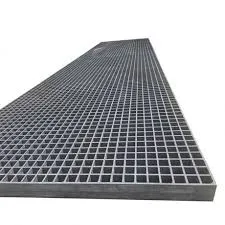
-
 Afrikaans
Afrikaans -
 Albanian
Albanian -
 Amharic
Amharic -
 Arabic
Arabic -
 Armenian
Armenian -
 Azerbaijani
Azerbaijani -
 Basque
Basque -
 Belarusian
Belarusian -
 Bengali
Bengali -
 Bosnian
Bosnian -
 Bulgarian
Bulgarian -
 Catalan
Catalan -
 Cebuano
Cebuano -
 China
China -
 China (Taiwan)
China (Taiwan) -
 Corsican
Corsican -
 Croatian
Croatian -
 Czech
Czech -
 Danish
Danish -
 Dutch
Dutch -
 English
English -
 Esperanto
Esperanto -
 Estonian
Estonian -
 Finnish
Finnish -
 French
French -
 Frisian
Frisian -
 Galician
Galician -
 Georgian
Georgian -
 German
German -
 Greek
Greek -
 Gujarati
Gujarati -
 Haitian Creole
Haitian Creole -
 hausa
hausa -
 hawaiian
hawaiian -
 Hebrew
Hebrew -
 Hindi
Hindi -
 Miao
Miao -
 Hungarian
Hungarian -
 Icelandic
Icelandic -
 igbo
igbo -
 Indonesian
Indonesian -
 irish
irish -
 Italian
Italian -
 Japanese
Japanese -
 Javanese
Javanese -
 Kannada
Kannada -
 kazakh
kazakh -
 Khmer
Khmer -
 Rwandese
Rwandese -
 Korean
Korean -
 Kurdish
Kurdish -
 Kyrgyz
Kyrgyz -
 Lao
Lao -
 Latin
Latin -
 Latvian
Latvian -
 Lithuanian
Lithuanian -
 Luxembourgish
Luxembourgish -
 Macedonian
Macedonian -
 Malgashi
Malgashi -
 Malay
Malay -
 Malayalam
Malayalam -
 Maltese
Maltese -
 Maori
Maori -
 Marathi
Marathi -
 Mongolian
Mongolian -
 Myanmar
Myanmar -
 Nepali
Nepali -
 Norwegian
Norwegian -
 Norwegian
Norwegian -
 Occitan
Occitan -
 Pashto
Pashto -
 Persian
Persian -
 Polish
Polish -
 Portuguese
Portuguese -
 Punjabi
Punjabi -
 Romanian
Romanian -
 Russian
Russian -
 Samoan
Samoan -
 Scottish Gaelic
Scottish Gaelic -
 Serbian
Serbian -
 Sesotho
Sesotho -
 Shona
Shona -
 Sindhi
Sindhi -
 Sinhala
Sinhala -
 Slovak
Slovak -
 Slovenian
Slovenian -
 Somali
Somali -
 Spanish
Spanish -
 Sundanese
Sundanese -
 Swahili
Swahili -
 Swedish
Swedish -
 Tagalog
Tagalog -
 Tajik
Tajik -
 Tamil
Tamil -
 Tatar
Tatar -
 Telugu
Telugu -
 Thai
Thai -
 Turkish
Turkish -
 Turkmen
Turkmen -
 Ukrainian
Ukrainian -
 Urdu
Urdu -
 Uighur
Uighur -
 Uzbek
Uzbek -
 Vietnamese
Vietnamese -
 Welsh
Welsh -
 Bantu
Bantu -
 Yiddish
Yiddish -
 Yoruba
Yoruba -
 Zulu
Zulu
frp trough cover
The Importance of FRP Trough Covers in Modern Infrastructure
Fiber Reinforced Polymer (FRP) trough covers have emerged as essential components in modern infrastructure due to their unique combination of strength, durability, and lightweight properties. As urban areas grow and the demand for efficient drainage systems increases, FRP trough covers offer effective solutions for various applications, from municipal drainage to industrial settings.
The Importance of FRP Trough Covers in Modern Infrastructure
One of the standout features of FRP trough covers is their outstanding resistance to corrosion and chemical degradation. Traditional materials like steel are prone to rusting, especially in environments that are constantly exposed to moisture or harsh chemicals. In contrast, FRP is inherently resistant to a wide range of corrosive substances, making it ideal for environments such as wastewater treatment plants, chemical processing facilities, and coastal areas where saltwater can be a factor. This longevity not only reduces maintenance costs but also extends the lifespan of the infrastructure.
frp trough cover

Moreover, FRP trough covers provide excellent safety features. They can be designed to offer enhanced slip resistance, making them suitable for pedestrian areas and walkways. Additionally, FRP is non-conductive, which adds an extra layer of safety in industrial environments where electrical hazards may be present. The impact resistance of FRP means that it can withstand heavy loads, making it suitable for both light and heavy traffic areas.
Another significant advantage of FRP trough covers is their aesthetic flexibility. With advancements in manufacturing techniques, FRP can be molded into visually appealing designs that complement the surrounding architecture. This is particularly beneficial in urban settings where appearance matters to both city planners and residents. By providing a broad range of colors and textures, FRP allows for creativity in design while still meeting functional requirements.
Furthermore, using FRP trough covers aligns with sustainable practices. The production of FRP involves less energy compared to traditional materials, and its long service life contributes to a reduction in the frequency of replacements, leading to lower resource consumption over time. Finally, at the end of their lifecycle, FRP materials can be recycled, contributing to a circular economy.
In conclusion, FRP trough covers have revolutionized the way we think about drainage and transportation infrastructure. Their lightweight nature, resistance to corrosion, safety features, aesthetic flexibility, and environmental benefits make them an ideal choice for modern applications. As communities continue to build and evolve, incorporating FRP solutions can significantly enhance the durability and functionality of crucial infrastructure, paving the way for smarter, greener cities. Embracing these innovative materials marks a progressive step in ensuring that our infrastructure meets the demands of today and the challenges of tomorrow.
Latest news
-
Exploring the Benefits of Top Hammer Drifter Rods for Enhanced Drilling PerformanceNewsJun.10,2025
-
High-Precision Fiberglass Winding Machine for GRP/FRP Pipe Production – Reliable & Efficient SolutionsNewsJun.10,2025
-
FRP Pipes & Fittings for Shipbuilding - Corrosion-Resistant & LightweightNewsJun.09,2025
-
Premium FRP Flooring Solutions Durable & Slip-ResistantNewsJun.09,2025
-
Premium Fiberglass Rectangular Tanks Durable & Lightweight SolutionNewsJun.09,2025
-
Tapered Drill String Design Guide Durable Performance & UsesNewsJun.09,2025









